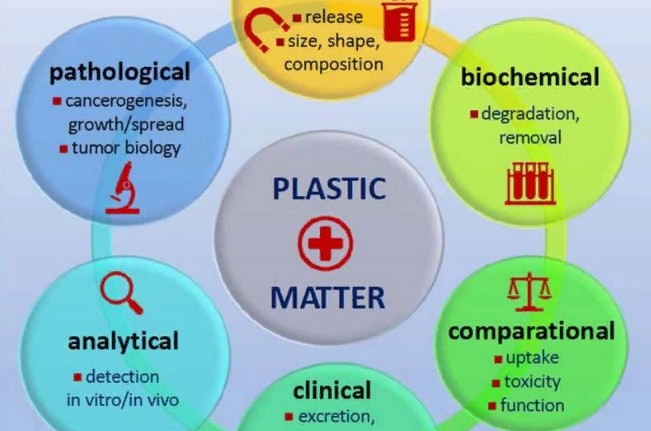On average, five grams of plastic particles per person each week enter the human gastrointestinal tract. This is roughly the same as the weight of a credit card.
Numerous studies are being conducted to determine whether ingested micro- and nanoplastics pose a health risk, but the answer is still unknown.The current state of scientific knowledge has been summarized by a study team from MedUni Vienna. The study was just published in the journal Exposure & Health.
The digestive system, where micro-and nanoplastic particles (MNPs) can be detected in tissue, is the focus of medical study on the subject. Ingested MNPs travelling through the gastrointestinal tract have been shown to alter the composition of the gut microbiome in experiments.
According to the research team led by Elisabeth Gruber (Division of Visceral Surgery, Department of General Surgery, MedUni Vienna) and Lukas Kenner (Department of Pathology, Comprehensive Cancer Center (CCC) MedUni Vienna and Vienna General Hospital, Department of Laboratory Animal Pathology of VetMedUni), such changes are linked to the development of metabolic diseases like diabetes, obesity, and chronic liver disease.
Scientists revealed unique molecular processes that enable the uptake of MNPs into gut tissue, in addition to their impacts on the gut flora.
According to particular investigations, MNPs in the gastrointestinal system could be taken up into tissue more readily and activate pathways implicated in local inflammatory and immunological responses. In particular, nanoplastics, in particular, are linked to metabolic pathways that play a key role in cancer development.
Plastic particles have been found in drinking water as well
Nanoplastics have a diameter of less than 0.001 millimeters, whereas microplastics have a diameter of 0.001 to 5 millimeters and are nevertheless visible to the naked eye to some extent. MNPs enter the food chain through a variety of sources, including packaging debris. Plastic particles are not only transported into the body through food, such as marine life or sea salt, but also through drinking.
According to a study, drinking the recommended 1.5 to two liters of water per day from plastic bottles results in the ingestion of roughly 90,000 plastic particles each year. Those who drink tap water, on the other hand, can cut their plastic intake to 40,000 particles per day, depending on their area.
Researchers also discovered that xenohormones leached from PET (polyethylene terephthalate) bottles contaminated mineral water. Xenohormones are known to have estrogenic properties, which can cause cancer in the body.
According to Lukas Kenner, the possible negative health impacts of plastic particles could be particularly harmful to people who have a chronic disease load.
A healthy stomach is more likely to protect you from health problems. Local alterations in the gastrointestinal system, such as those associated with chronic disease or even negative stress, may make them vulnerable to MNPs’ detrimental effects. “


